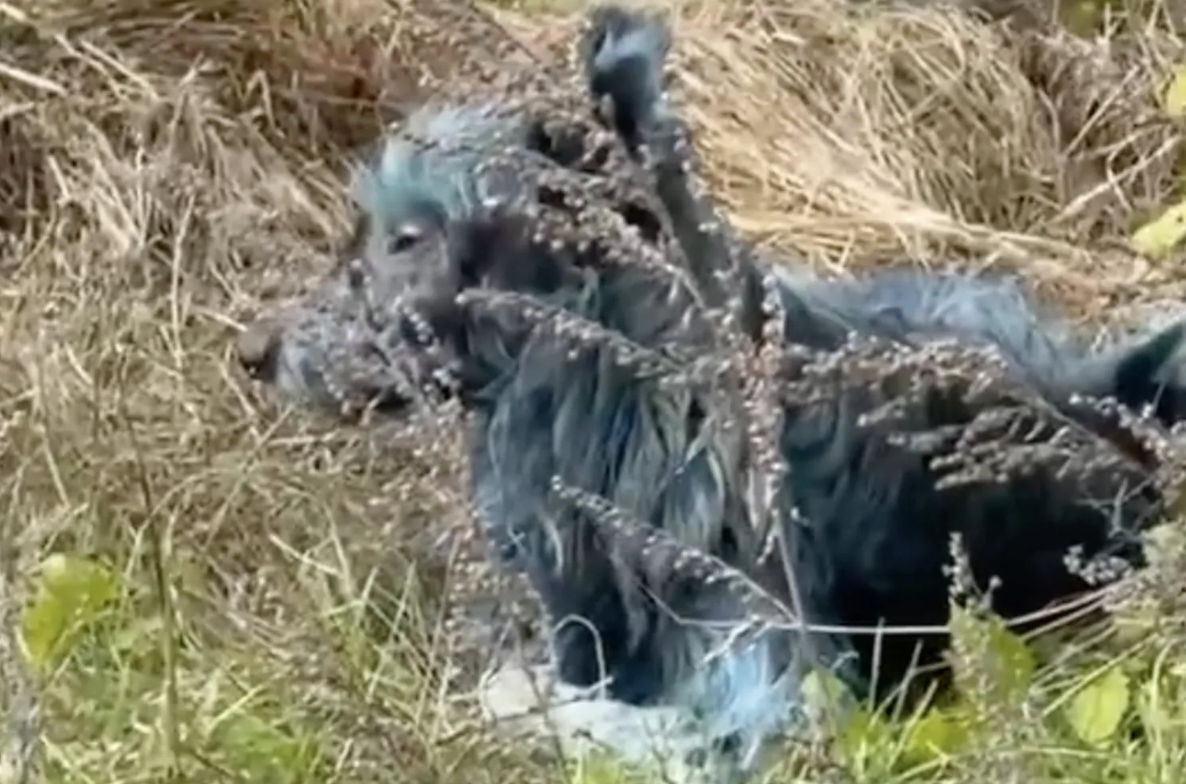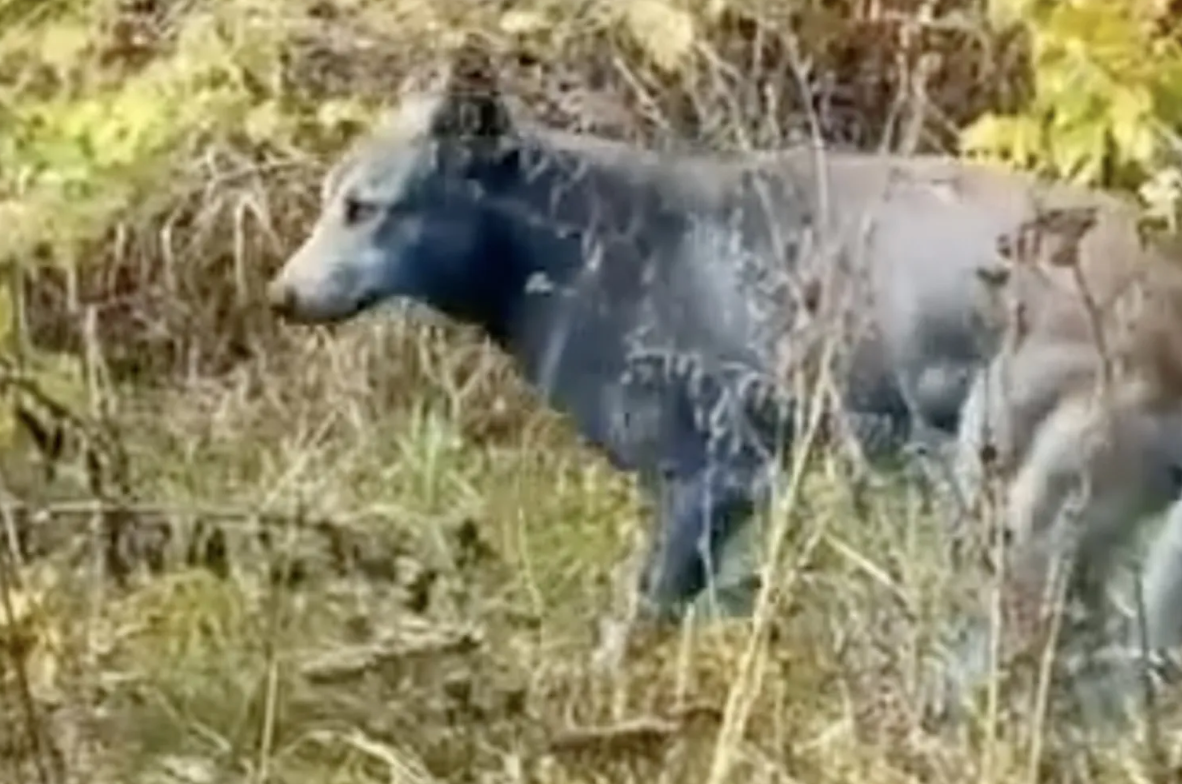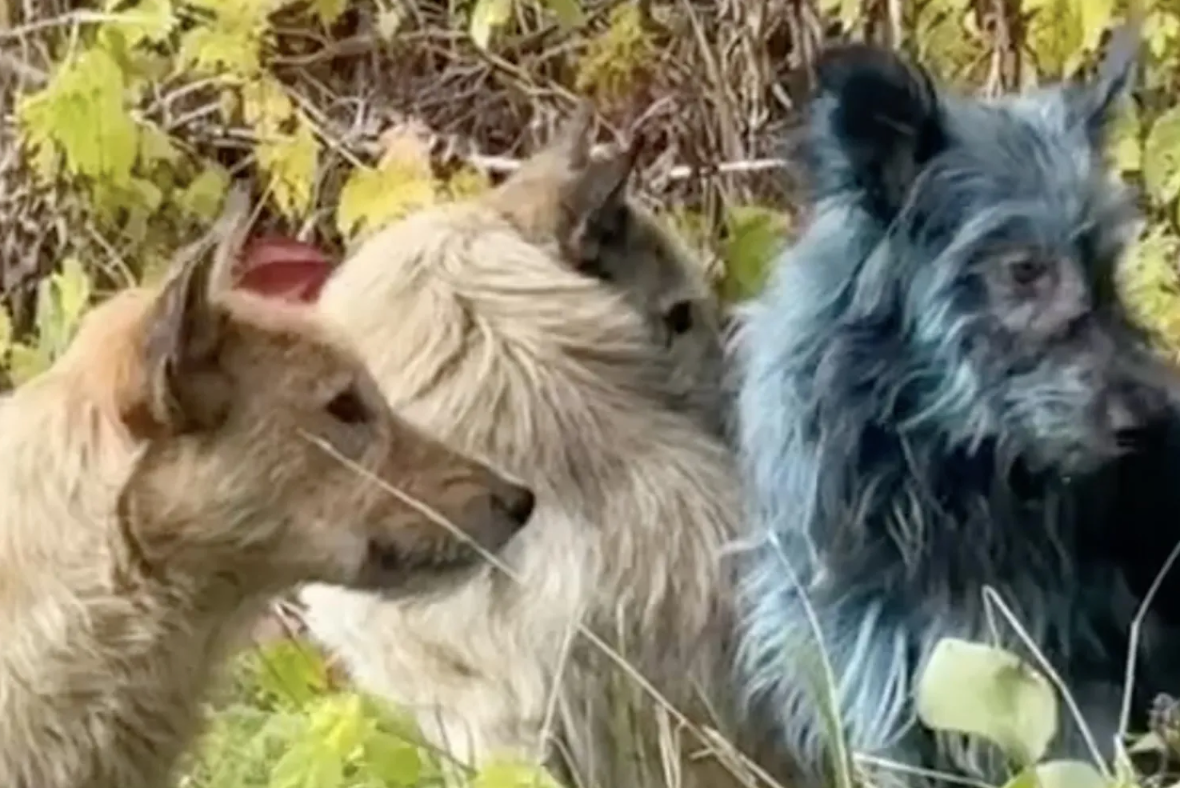Mysterious Blue Dogs Spotted Roaming the Chernobyl Exclusion Zone
Nearly four decades after the Chernobyl nuclear disaster, the infamous Exclusion Zone — a 19-mile radius surrounding the abandoned power plant — continues to hold haunting surprises.
Earlier this month, volunteers from Dogs of Chernobyl, a project supported by the non-profit Clean Futures Fund (CFF), shared astonishing images showing dogs with bright blue fur wandering near the restricted area in Ukraine.
“We are on the ground catching dogs for sterilization and came across three dogs that were completely blue,” the group wrote on Instagram.
“We are not sure exactly what is going on.”
The photos quickly spread across social media, leaving scientists and animal lovers around the world both stunned and concerned.

What Could Be Causing the Blue Fur?
According to Dogs of Chernobyl, the animals appeared healthy and active, which suggests that the unusual blue coloring is not linked to radiation exposure.
Instead, early theories point to chemical contamination — possibly from industrial materials or leaked substances left behind in the exclusion zone.
In a statement to CBS News, Clean Futures Fund suggested that the dogs might have accidentally come into contact with a leaking chemical source, possibly paint or dye waste, or even a portable toilet chemical that temporarily dyed their fur.
“The bright blue coloration is unlikely to be caused by radiation or malicious human activity,” the organization said. “The coloring appears to be temporary.”
While researchers work to capture the dogs safely for testing, they continue to monitor their health and behavior closely.
Life Inside the Chernobyl Exclusion Zone

The Chernobyl disaster of 1986 forced over 120,000 residents to evacuate, many leaving behind their beloved pets under the assumption they would return in a few days. They never did.
Decades later, the dogs that roam Chernobyl today are descendants of those abandoned animals.
According to CFF, more than 700 stray dogs now inhabit the Exclusion Zone, living among the ruins of ghost towns, forests, and crumbling industrial sites.
Because of strict contamination rules, these animals cannot leave the area, so the Dogs of Chernobyl program works tirelessly to feed, vaccinate, and sterilize them.
“They’re malnourished, exposed to rabies, and constantly fighting to survive,” the organization explains. “But they’ve also learned to trust people again — they’re survivors.”
The dogs often seek shelter in abandoned buildings and old machinery, making them vulnerable to toxic substances left from Soviet-era industrial activity — a possible explanation for the strange blue hue now observed.
A Symbol of Survival Amid Ruins
While the world remains fascinated by the mystery of the “blue dogs,” many view them as living symbols of resilience in one of Earth’s most radioactive regions.
For volunteers working inside Chernobyl, each dog represents not only a tragic past but also a powerful reminder of endurance, adaptation, and hope.

“These dogs are the heartbeat of Chernobyl,” one volunteer told Clean Futures Fund. “They remind us that even in the most abandoned places, life finds a way.”
The organization plans to continue testing the blue-furred dogs to determine the exact cause of the coloration — while also ensuring they receive medical care and protection from further exposure.
